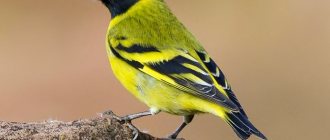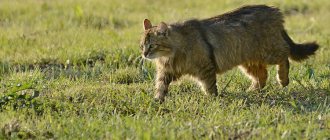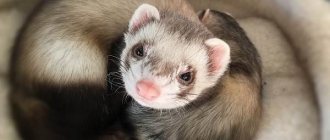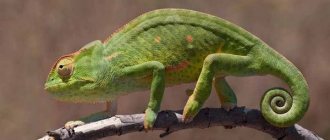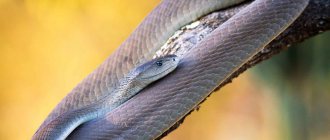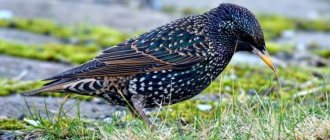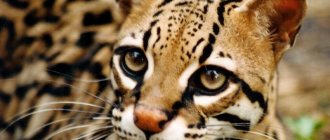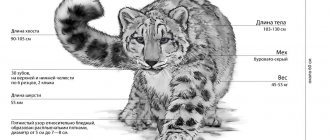Spread the love
The most common species of birds belonging to the nuthatch family is the common nuthatch. It is found in many European countries, Japan, China, Korea and Russia. In the Russian Federation, different subspecies of nuthatch are common in all corners of the country. The entire habitat from the Atlantic coast to the Pacific coast. This bird species stands out for its speed. And also, it can move vertically, even upside down.
By character, for the most part, the common nuthatch is very curious. If you see a bird jumping with light, relaxed movements in different directions, it will immediately become clear why such a name was chosen. This bird is very active and restless. At the same time, people also have another “nickname” for the common nuthatch: coachman. It is unknown who gave this name, but it was given due to the characteristic sounds it makes.
Main features of the common nuthatch
The common nuthatch has a body length of 10 to 16 centimeters. At the same time, there is a subspecies of the giant nuthatch. This subspecies is common in China and Thailand and can be up to 20 centimeters in length. And according to the wingspan, the width is from 21 to 28 centimeters. The common nuthatch weighs approximately 25 grams. This bird has a large head, a dense body, and a short tail. There is a straight beak, painted dark gray. The beak is of medium length and resembles in shape the beak of a woodpecker. Using its beak, the common nuthatch can crack nuts or hard seeds. The color of the feathers depends on the area where this bird lives.
The nuthatch, which lives in northern and western Europe, the Caucasus, and the forests of western Asia, has a white neck. In northern Europe, its belly is brown, and the body color on top is gray-blue. In the forests of western Europe and western Asia, the common nuthatch has a red belly. In the northern latitudes of their habitat, these birds usually have a white belly, brownish-red on the sides, and the tail itself is brown with white spots. The bird, found in eastern China, has a light brown underneath body.
In the Far East, the nuthatch, unlike other regions, has a white belly. And the color of the feathers at the tip of the tail is distinguished by white spots. A recognizable feature of this bird is the presence of a narrow black stripe on the head, passing through the entire beak and up to the neck. The feet have long claws and are colored gray-brown. The male differs from the female in body size. Males appear slightly larger than females. By other characteristics they cannot be distinguished from each other.
Appearance of a nuthatch bird
The nuthatch bird has a dense build, a fairly large head and a short neck. The nuthatch's beak has a shape adapted for chiselling. Experts call this type of beak chisel-shaped; it is sharp, straight and strong, and has hard bristles at its base.
The nuthatch's wings are quite short, which explains its small wingspan - only twenty-five centimeters, and have a rounded shape.
The shape of the nuthatch's tail resembles a short wedge. It is painted bluish-gray with white and black spots. But the legs are distinguished by their strength, despite the fact that they are quite short. The paws have long, curved claws.
The plumage of nuthatches is particularly loose and has a rather inconspicuous color. The back of the nuthatch is painted gray or bluish-gray, but the abdomen has a fairly wide color spectrum. It can be white, dusty, ocher, red and chestnut. The nuthatch's head is decorated with a gray cap, and its eyes have a dark stripe.
This bird is no different in size. An adult can grow to a maximum of ten and a half centimeters and weigh ten grams in total. However, there are also larger species of nuthatches.
Photo of nuthatch
What do birds eat?
The nuthatch's diet depends almost entirely on the period of its life. So during the mating season, this bird prefers animal food, and the rest of the time plant food. That is, in the spring and summer, it is found for food in the bark of trees and leaves of insects and arthropods, and at the end of summer they switch to seeds of coniferous trees, acorns, nuts and fruits. In addition, some species of nuthatches are prone to storing supplies for the winter. These birds hide part of their food in the bark of trees for times when food supply is especially problematic.
Where do they live?
Today, you can find nuthatches in the northern hemisphere of the globe, especially in Asia. These birds prefer a temperate climate, and therefore their habitat extends from the Atlantic Ocean to the Pacific. However, some species live in Africa, Morocco, Algeria and North America.
The place of residence of nuthatches depends on the latitude of their habitat. Thus, northerners prefer plains, while southerners prefer mountains. These are arboreal birds, so there are always a lot of them in coniferous, deciduous and mixed forests.
Photo of nuthatch bird
Places of residence
Most often, they choose coniferous, deciduous or mixed forests, parks, and artificial gardens for living. They live in tall old trees. They no longer fly away from their habitable places. The common nuthatch is not a migratory bird. Exceptions are found only in some subspecies living in the northern regions. During the cold season, they do not stay for the winter, but fly to the southern edges of their habitat. But most common nuthatches live and remain for the winter in only one territory. For this reason, they are still not considered migratory.
They do not allow other birds into their places of residence, but they themselves do not fly into other people’s possessions. If cold weather sets in, they sometimes join flocks of other birds. At the same time, common nuthatches do not gather in flocks.
Nuthatches in the wild can quickly move vertically in any direction along tree trunks. They have this ability due to the presence of long and very tenacious claws. Often these species of birds settle near places where people live. Most of these birds can be easily tamed. Special houses are made for them, in which they then settle and reproduce.
Nuthatches sing at different frequencies. Despite their small size, they can produce loud sounds covering a wide range of frequencies. The composition of the sounds of their singing consists of a whistle, a bubbling trill and various melodies. During the mating season, singing usually resembles a call in sound, albeit longer. If the bird is searching for food, it makes repeated short whistles. For these sounds, she received the second name among the people “coachman”.
When excited , it produces loud sounds that sound like “tyoch” or “tyog”. These sounds are repeated frequently and have short pauses. The common nuthatch can also produce various trills at different frequencies, something similar to “tiyu-tiyu-tiyu”. The nuthatch makes the most noise, making sounds just before the start of the breeding season. This period begins around the end of winter and ends in the spring.
What types are there and their differences
Today there are quite a lot of species of this representative of the animal world.
Common nuthatch
You can meet this representative of the animal world in Europe, Asia and North Africa. This is a small bird that rarely grows to fourteen and a half centimeters and weighs no more than twenty-five grams. Its color is usually bluish-gray, but the color of its tummy depends on its place of residence. For example, birds living in Europe, Asia and the Caucasus have a red belly. A gray stripe is visible in front of the eyes; the beak is the same color.
Photo of a common nuthatch
Chit
It got its name for a reason, because it is the smallest representative of this family, its weight does not exceed ten grams and ten centimeters in height. It has a bluish-gray back, a whitish belly and a gray cap with a white spot at the back of the head. The baby lives in coniferous forests in southern British Columbia, the western United States and Mexico.
Photo of baby
Corsican nuthatch
As is already clear from the name, this species lives in the coniferous forests of the island of Corsica. It is not much larger than a baby; an adult grows up to twelve centimeters and fourteen grams in weight. Its color is quite inconspicuous: the back has a bluish-gray tint, which is typical for this species, the belly is gray-beige and whitish in color.
Blackhead
This tiny bird is only twelve and a half centimeters long, has a small head and beak. As is typical for nuthatches, its back has a bluish-gray tint, but its belly already shows the individuality of the species and has a dirty white tint, and as an addition, a red spot on the chest. The head has a white eyebrow and a black cap. Since their habitat in the Caucasus Mountains, Turkey and the island of Lesbos can provide them with a year-round supply of food, they have no need for flights.
Black-headed nuthatch
Canadian
This species has distinctive features from its counterparts, including a reddish belly, but its face and throat are white. The unique appearance of the bird is complemented by a black stripe on the eyes and a cap of the same color on the head, as well as a small gray beak. Such a bird can grow up to eleven and a half centimeters in length and eleven grams in weight. These babies live in the coniferous forests of Alaska, Canada and the USA.
Canadian
Przewalski's nuthatch
It differs from its fellows in that its back is blue-violet, and the crown and back of the head are dark. The cheeks and throat have a whitish-yellow tint, which smoothly turns into the chest and abdomen with red plumage. This species can grow up to thirteen centimeters in length and thirteen grams in weight. This is a mountain bird and lives in Chinese mountain forests with deciduous trees.
Przewalski's nuthatch
Caroline
A fairly large species of nuthatches, capable of gaining weight up to forty grams and growing up to eighteen centimeters in length. For life, it prefers forests of deciduous and mixed origin, extending in North America.
Carolina nuthatch
Small rocky
Outwardly, it is almost no different from the common nuthatch. However, he lives in rocky terrain, which is so rich in Turkey, Syria, Israel and Iran. The bird can grow up to thirteen and a half centimeters in length and thirty-seven grams in weight.
Small rocky
Big rocky
The largest representative of this species. It can grow up to sixteen centimeters in length, and its weight reaches fifty-five grams. The back is a gray color characteristic of nuthatches, the belly is white with red on the sides, and, of course, the black mask characteristic of nuthatches. This “big guy” lives in Transcaucasia, Middle and Central Asia.
Big rocky
Black-faced
This representative of the animal species grows up to twelve and a half centimeters in length and seventeen grams in weight. Its color is not typical for most species. He has a blue-violet back and lavender cheeks. The belly is beige in color with a whitish chest. She has a black spot on her head and a red beak. For life they chose India, Sri Lanka, southern China and Indonesia, where there are evergreen forests that have a lot of food for them.
Spreading
Area
— Advertising —
Nuthatches are widespread in the northern hemisphere. The largest number of them live in Asia. In Europe, nuthatches also live almost everywhere. Thus, the range covers temperate climate zones from the Atlantic coast to the Pacific coast. Two species are found in the Atlas Mountains of northern Africa, Morocco and Algeria. The Canada nuthatch, brown-headed nuthatch, and little nuthatch are found in North America.
Habitats
Nuthatches choose places with a cool climate to live. Northern species live on plains, while southern species prefer mountains. In general, birds lead a sedentary lifestyle, and only occasionally make small migrations. Nuthatches are arboreal birds that live in coniferous evergreen forests, mountains or foothills. Some species are found in mixed or deciduous forests, woodlands and cultivated landscapes.
Is the nuthatch a migratory bird or not?
The nuthatch is a wintering bird that spends the winter in the forest (they do not fly south). Sometimes nuthatches are observed in the steppe zone, but more often the birds winter in coniferous forests. Ornithologists classify them as partly nomadic. As soon as spring comes, the birds move again to mixed and deciduous forests.
What do nuthatch nests look like?
For their nests, these birds choose empty hollows, which are covered with various insulating materials of natural origin. Some species can quite independently create their nesting place in a tree trunk, like a woodpecker, however, most occupy ready-made hollows where other birds used to live. At the same time, they carefully disguise the entrance, thus protecting themselves from enemies.
Nuthatches are monogamous birds. They reach the mating season already in the first year of life. In one clutch, the female can lay from four to fourteen white eggs with reddish-brown spots. She incubates the eggs over the next two or three weeks. The chicks hatch in fluff and are not immediately able to fly, so both parents feed them. By the end of the first month of life, they begin to fly, but they still live with their parents for a certain time, and only after that they go on a free flight.
Rock nuthatch nest
Character and lifestyle of the nuthatch
The top has such traits as curiosity, activity, mobility, and courage. In search of something interesting or tasty, he can fly into a window and sit into a person’s hands if he is given a treat. Birds are quite active and do not like to sit still.
At the same time, they do not fly as much, they jump more along the trunks and branches, studying every crack in the tree bark, looking for a dormant larva or a small seed. They very bravely defend their nest and family, and if you catch him at the moment when he finds a grain, he will never let it out of his beak and will try to break free along with his prey until the last moment.
Movement speed
These birds can be safely called very fast, especially during the period of raising offspring. They scurry back and forth all day in search of food for themselves and their ever-hungry offspring. And I must say that nuthatch chicks are very voracious. Therefore, these birds can be safely classified as hardy representatives of the animal world.
Nuthatch preparing to nest
Interesting Facts
- The indigenous people of North America, the Cherokee, gave this bird the name "deaf" for its absolute lack of fear of humans. The Cherokees decided that the birds were simply deaf, since they did not fly away when a person approached, however, this was not so;
- Some scientists claim that people have adopted some habits from these birds. For example, the construction of clay houses was observed in nuthatches, which build their nests in rocks;
- The Germans call this bird the “woodpecker” due to its strong resemblance to miniature woodpeckers;
- As mentioned above, since nuthatches are wintering birds, it is common for them to prepare for winter in advance by making supplies. It is interesting that such a small bird is capable of making quite large reserves in various hiding places. For example, the weight of a given bird’s reserves can reach one and a half kilograms, and this is only in one cache. And the nuthatch can have up to ten such storages, and sometimes more;
- The nuthatch is very useful for trees; it is a “doctor” for them. Since the nuthatch’s diet includes bark beetles, by eating them this bird significantly prolongs the life of various trees;
- Nuthatches are not only not afraid of people, but also willingly make contact with them. Especially in the winter season, when the cold deprived them of a lot of food. These birds can calmly sit on a person’s hand and feed from his hand without the slightest fear;
- Unfortunately, among the nuthatches, there are already rare species that are approaching extinction. Among them are Algerian, Giant, White-browed and Bahamian.
Shall we go for mushrooms?
Listen to the nuthatch's voice
The audio tag is not supported by your browser. Close
Reproduction and lifespan
Basic information:
- puberty – from 1 year;
- breeding season - from April to May;
- hatching - 1-2 times per season;
- eggs in a clutch – 4-12;
- incubation – 2.5 weeks;
- feeding chicks – 5-5.5 weeks;
- lifespan – 10-11 years.
The period of time in which nuthatches nest is determined by the area they occupy. The nesting season lasts from April to May. The nuthatch is monogamous and mates for life. It makes its nests in hollows, usually in abandoned woodpecker nests or natural recesses in tree trunks.
Nest sites are located at a height of 3 to 8 meters . The entrance hole to the nest is usually 3-4 cm in size, and, if necessary, can be reduced using clay. The bottom is lined with leaves and small pieces of bark.
Clutch size is limited to 4-12 eggs, but more often there are 6-8 eggs in a nest. The matte shell is painted white with small red-brown speckles. Only the female sits in the nest, and she can leave the clutch only in case of direct danger. Flying away from the nest, she covers the eggs with litter. Incubation lasts for 2.5 weeks. The bodies of hatched chicks are covered with long down.
Both parents feed the offspring. After birth, nuthatch cubs receive food for up to 5-5.5 weeks . After 22 days, the grown chicks are already able to fly. Most of the young individuals select a habitat by the end of the summer period, but the choice of nesting site and partner finally occurs only next spring. The lifespan of birds in the wild covers 10-11 years.
Nuthatch bird
